
Topkapi Palace (Turkish name: Topkapı Sarayı) is a palace in the center of Istanbul, which previously served as the main residence of the sultans of the Ottoman Empire, as well as the administrative and educational center of the state.
The Topkapi Palace is now the "Topkapı Sarayı Müzesi" museum.
The name "Topkapi" translates as "Cannon Gate".
Today Topkapi Palace is one of the main attractions of Istanbul, a magnificent architectural monument of the 15th-19th centuries and is a complex with courtyards, a palace complex with an administrative part and a harem, as well as other buildings and viewing terraces. Also in the complex is the Church of St. Irene.
The palace complex is located on the European side of Istanbul, in the historical part, on Sarayburnu Cape, near the place where the Bosphorus Strait and the Golden Horn Bay flow into the Sea of Marmara.
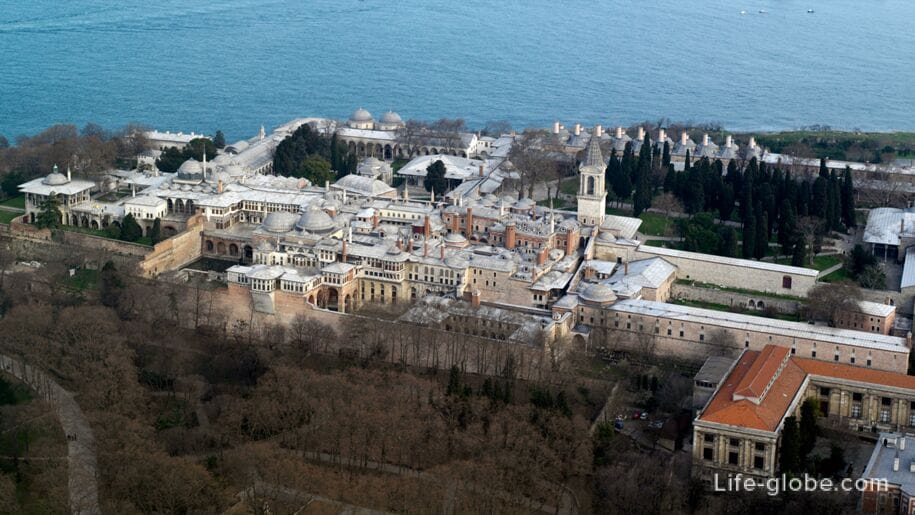
Topkapi Palace was built on the site of the acropolis of ancient Byzantium in 1460-1478 by the will of Sultan Mahmed II (Fatih the Conqueror). Before moving to Topkapi, the Sultan lived in a palace built for him in the area of the current Bayezid Square (nothing has survived from this palace).
Over time, the Topkapi Palace was completed and expanded.
In the 16th century, Hurrem (the wife of Sultan Suleiman I the Magnificent), in order to be closer to the sultan, achieved the transfer of the harem to the Topkapi Palace. Before that, the palace served for the most part as the "working" residence of the sultans. The construction of the harem was the largest reconstruction of the palace since its foundation.
Topkapi was surrounded by a high wall, had several courtyards, administrative and administrative parts of the palace with a harem, a treasury, a library, an armory, mosques, St. Irene's Church, a kitchen, a hospital, as well as pavilions, buildings belonging to officials living in the palace and outbuildings.
For almost 400 years, the Topkapi Palace was the administrative, educational and artistic center of the Ottoman Empire, until Sultan Abdul-Majida I moved to the newly built Dolmabahce Palace (Dolmabahçe Sarayı), which today is also a museum.
On April 3, 1924, by order of Mustafa Kemal Ataturk, the Topkapi Palace complex was turned into a museum, which today is the most significant and popular attraction in Istanbul.
A large number of relics are displayed in the premises of the palace.

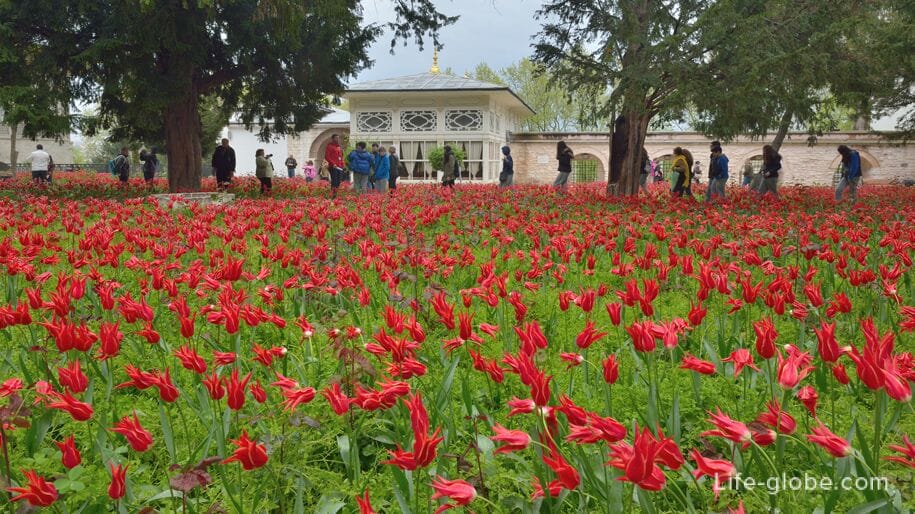

The Topkapi Palace complex is still surrounded by a high wall.
The main gate leading to the first courtyard of the palace is the Sultan's Gate (Bab-y Hümayun, Bab-y Hümayun). The sultan entered these arched gates and they date back to 1478 and are now covered with marble from the 19th century. Gilded Ottoman calligraphy with verses from the Koran and sultans' tugras adorns the upper part of the gate.
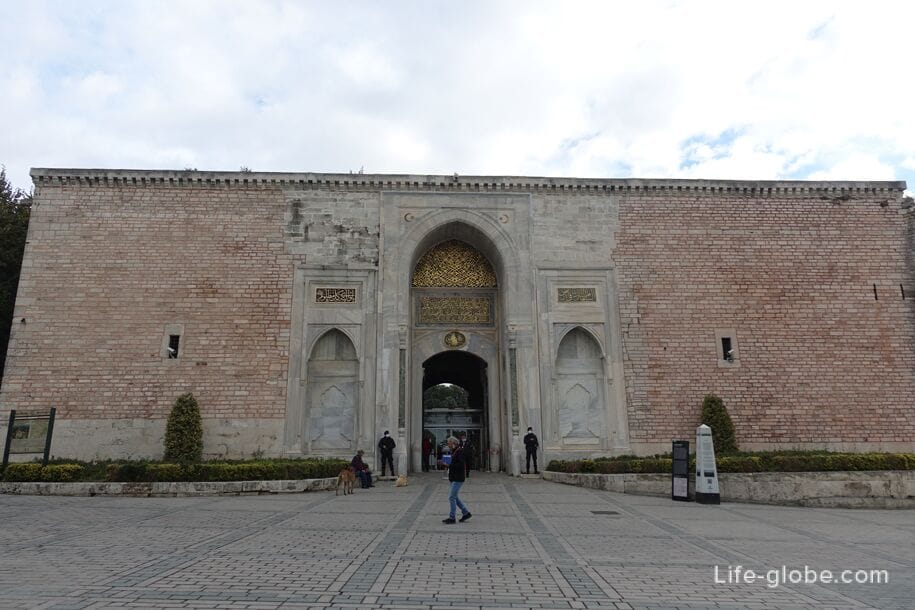
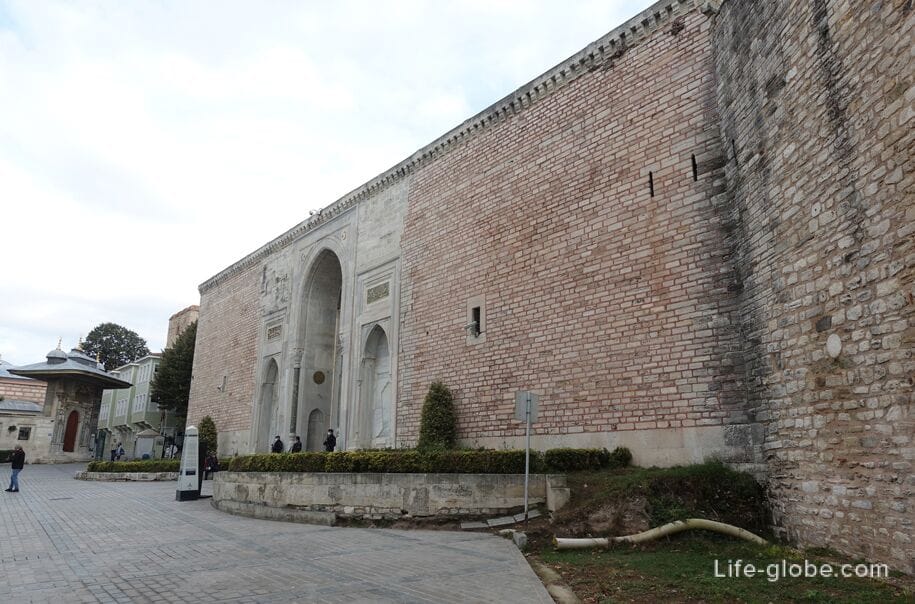
The first courtyard after the Sultan's Gate functioned as a park and is the largest of all the courtyards of the palace. There were buildings here, some of which no longer exist.
The courtyard was known as the "Janissary's Yard" or "Front Yard". Today there is a cafe here.
The main building that has survived to this day in this courtyard is the Church of St. Irene (Aya Irini, Aya-Irena), which was erected at the beginning of the 4th century on the site of the ruins of the ancient temple of Aphrodite under the Roman Emperor Constantine and was the main temple of the city before the construction of the Hagia Sophia Cathedral (now the Hagia Sophia Mosque).
After the conquest of Constantinople in 1453, the church of St. Irene was not converted into a mosque and there were no significant changes in its appearance. During the 15th and 18th centuries, the church was used by the Ottomans as armories, and since 1846, it has been turned into a museum.
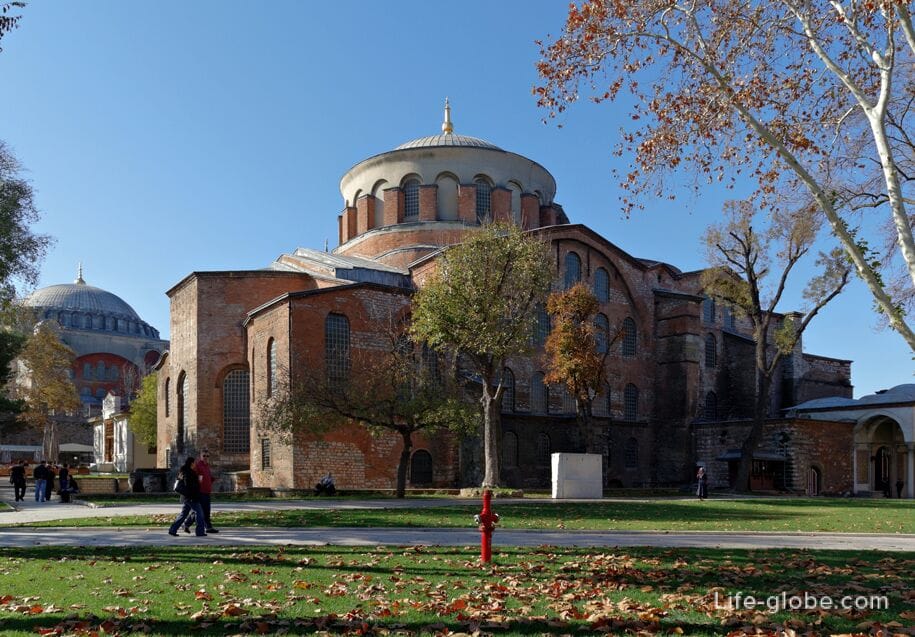
From the first courtyard, the Welcome Gate (Babü's-selâm, Bab-us-selyam), also known as the Middle Gate (Orta Kapı), leads to the second courtyard of the Topkapi Palace.
These crenellated gates have two large pointed octagonal towers. The inscription on the door dates this gate to 1542. The gates are richly decorated with religious inscriptions and monograms of sultans.
During the Ottoman Empire, only the Sultan and the Walid Sultan (the sultan's mother) could pass through the Middle Gate on horseback. Everyone else, including the Grand Vizier, had to dismount - get off the horse and walk.

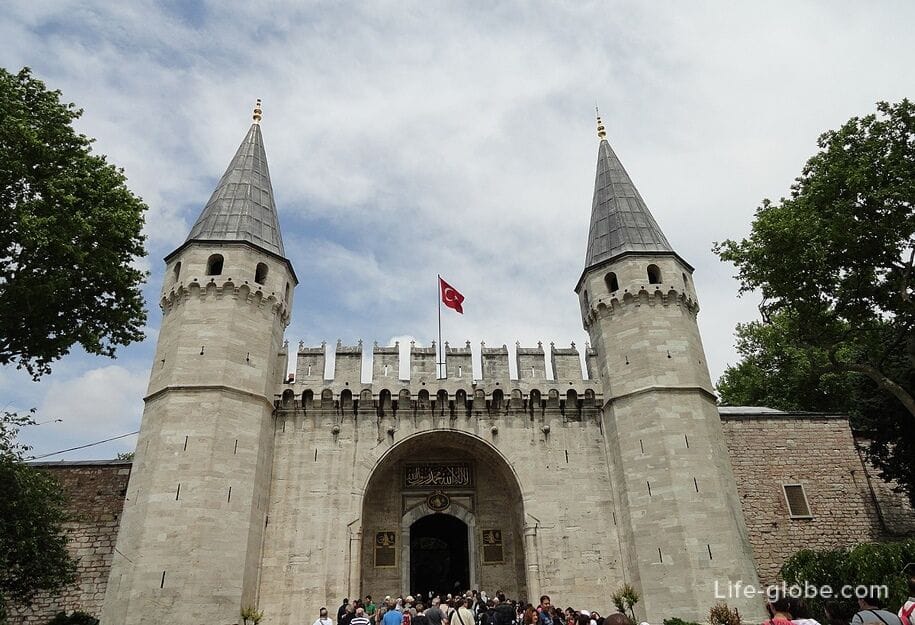
The second courtyard was called "Sofa Square" or "Square of Justice". The state administration of the empire was located here.
Unlike typical European palaces, which are one large building with adjacent gardens, Topkaps are a series of pavilions, kitchens, barracks, audience halls and sleeping quarters built around a central courtyard. This architecture also makes the Topkapi complex unique, compared to other later sultan palaces of Istanbul, which were built in the "European manner".
In the second courtyard, which throughout history has been the scene of many ceremonies, there is an ornate chamber of the Imperial Council (Dîvân-Hümâyn, Divan-and Humayun), where meetings of sofas were held, and a treasury in which a collection of Ottoman and European weapons and armor is displayed. There are also: the Tower of Justice, the entrance to the harem, kitchens and stables.
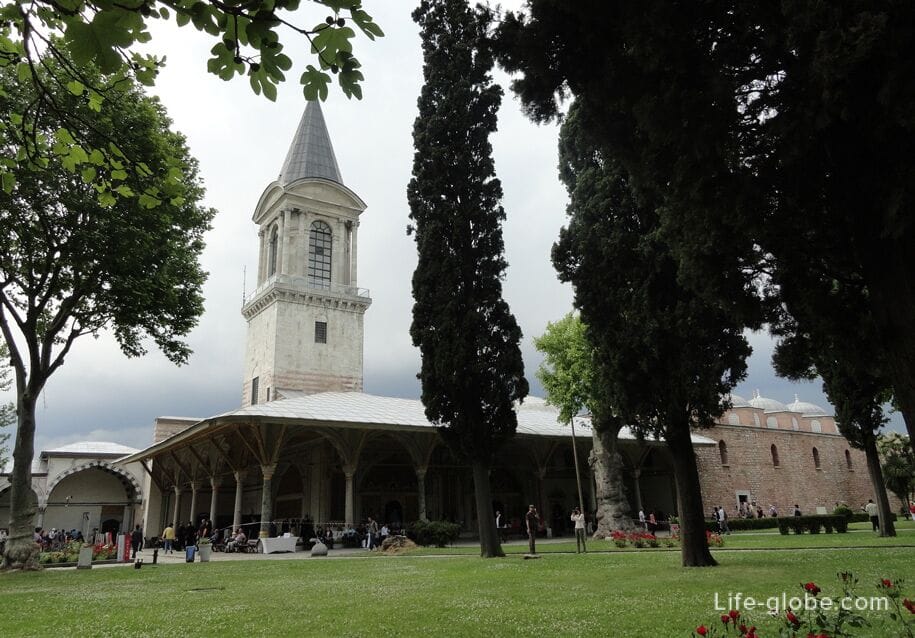
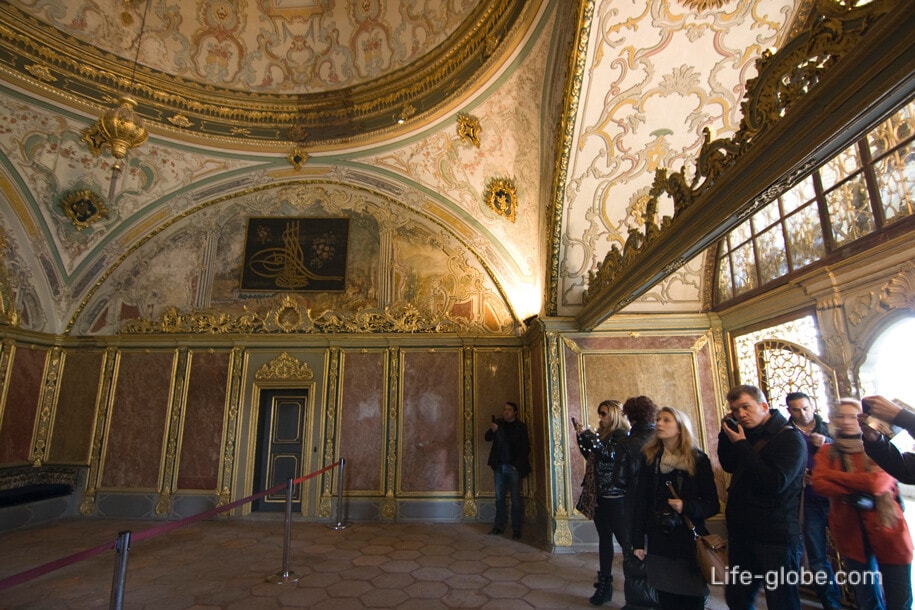
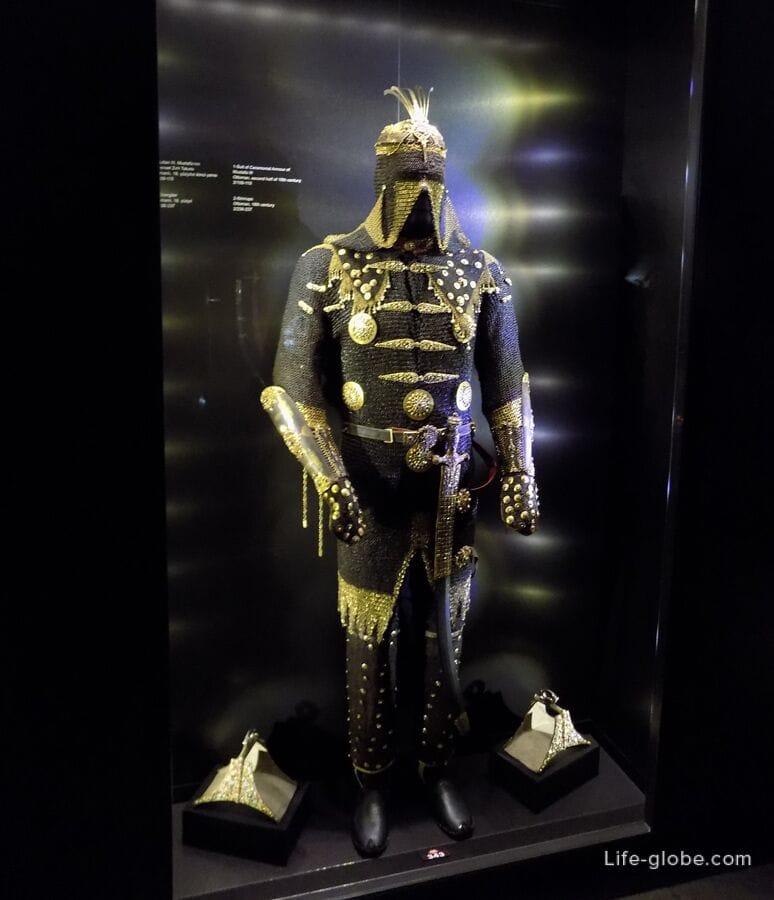
Topkapi harem was the place where the imperial family lived, including the sultan's mother and eunuchs.
The sultans kept up to 300 concubines in the harem, although their number was usually less.
There are many rooms in the harem, as well as several baths, mosques and a women's hospital. Many of the rooms are quite small and simple in the interior, which cannot be said about the famous rooms of Hurrem.

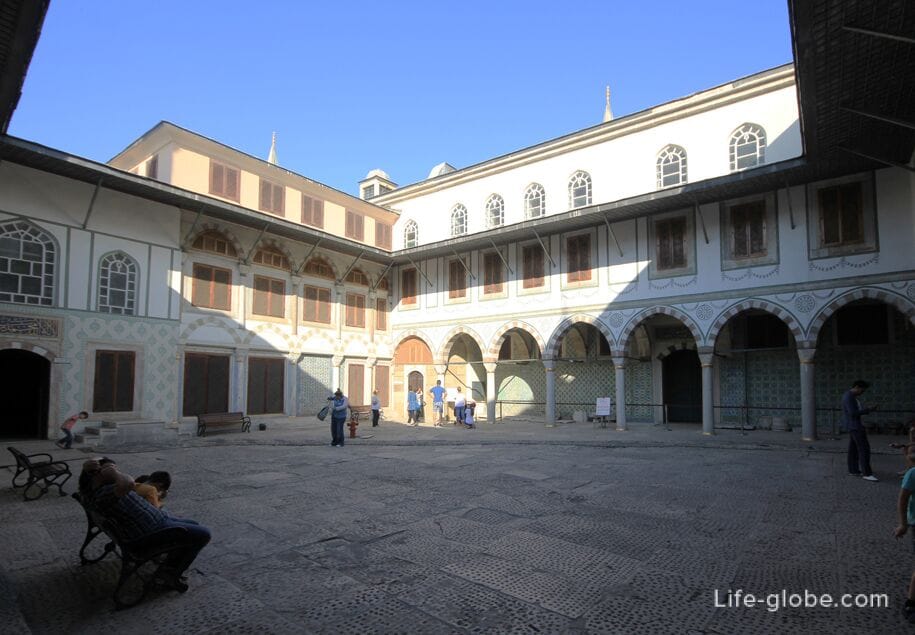
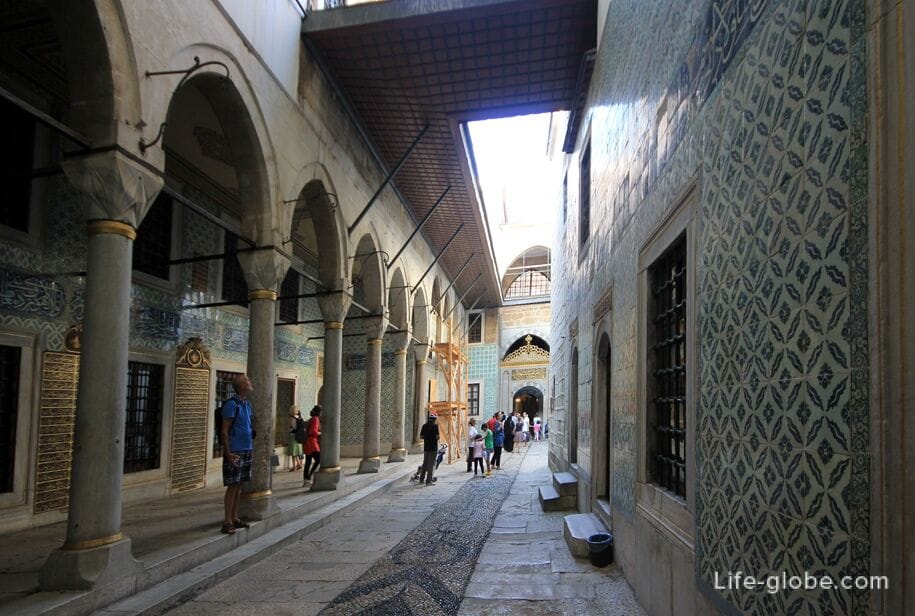
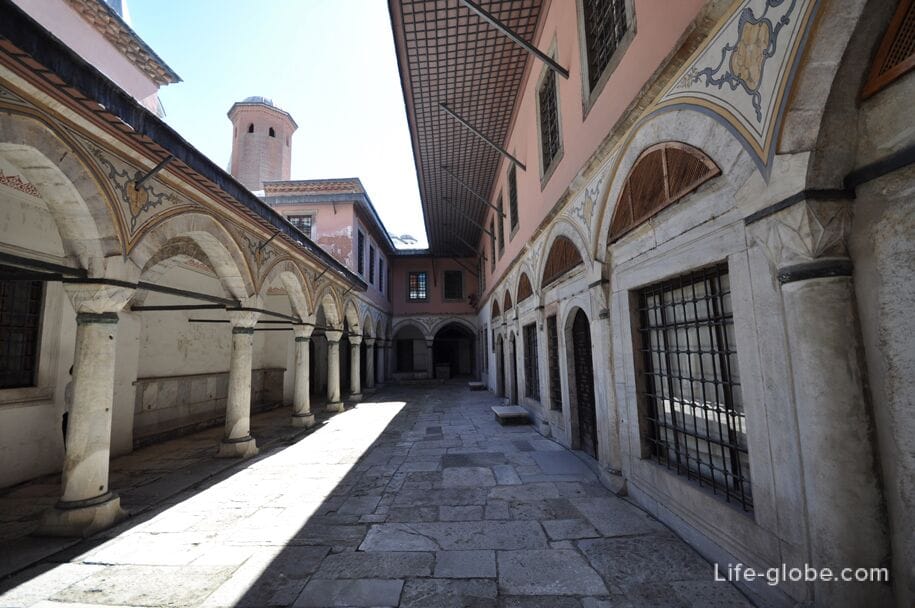
The palace kitchens (Saray Mutfakları) were built when the palace was first built in the 15th century, and expanded during the reign of Suleiman the Magnificent.
The kitchens are located on an inner street stretching between the Second Courtyard and the Marmara Sea.
In addition to the kitchen utensils on display, today the buildings house a collection of gifts made of silver, as well as a collection of porcelain.
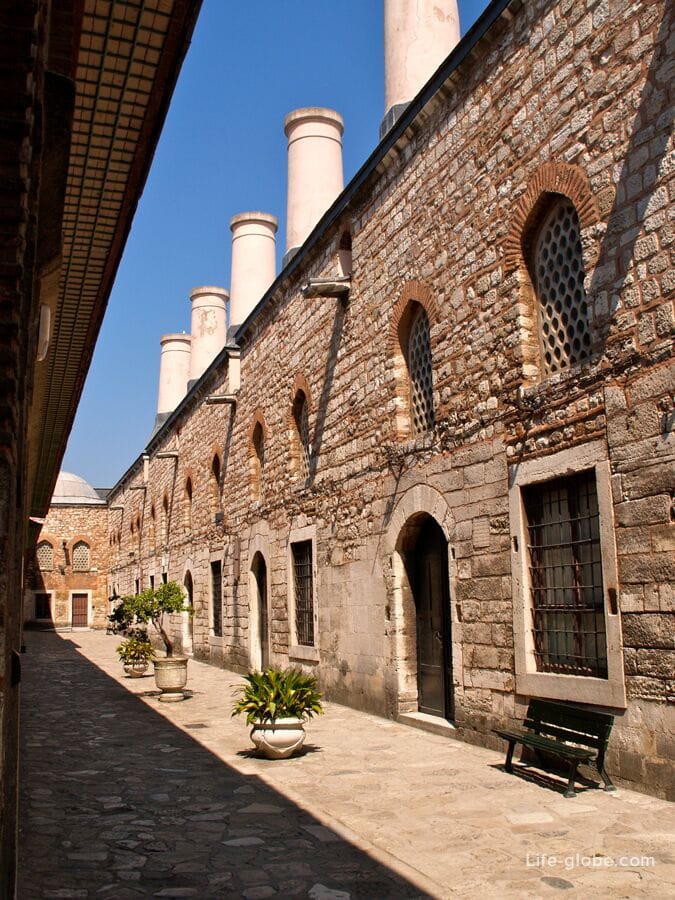
The gates of Happiness or Bliss lead from the second courtyard to the third courtyard (Bâbüssaâde or Bab-üs Saadet, Bab-us-saadet).
The gate was probably built under Mehmed II in the 15th century and was renovated in Rococo style in 1774 under Sultan Mustafa III and during the reign of Mahmud II.
A small jagged stone on the ground in front of the gate marks the place where the banner of Muhammad was unfurled. The Grand Vizier or military commander going to war was presented with this banner at a solemn ceremony.
Passing through the gate, the guests enter the great throne room, where the sultan conducted his state affairs, received foreign ambassadors and gifts.
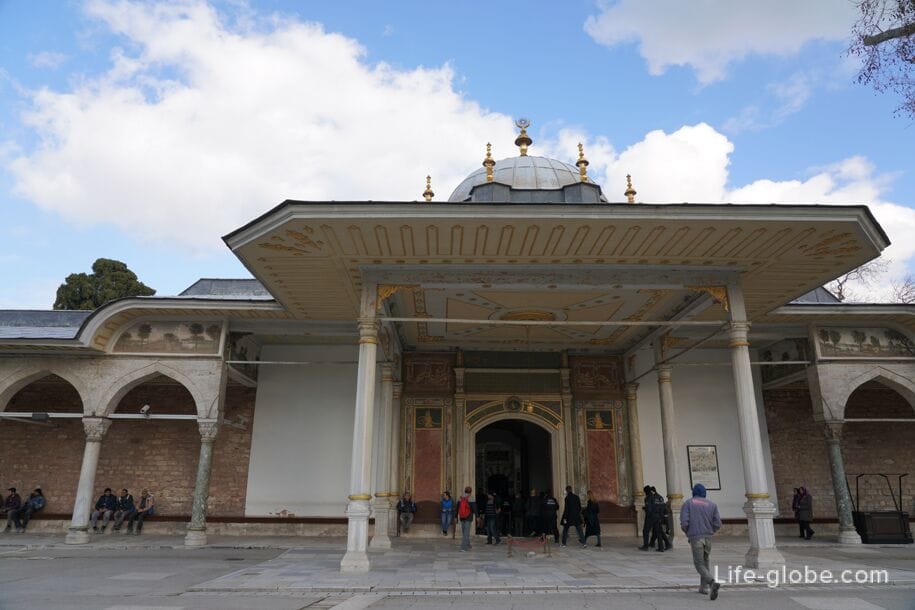
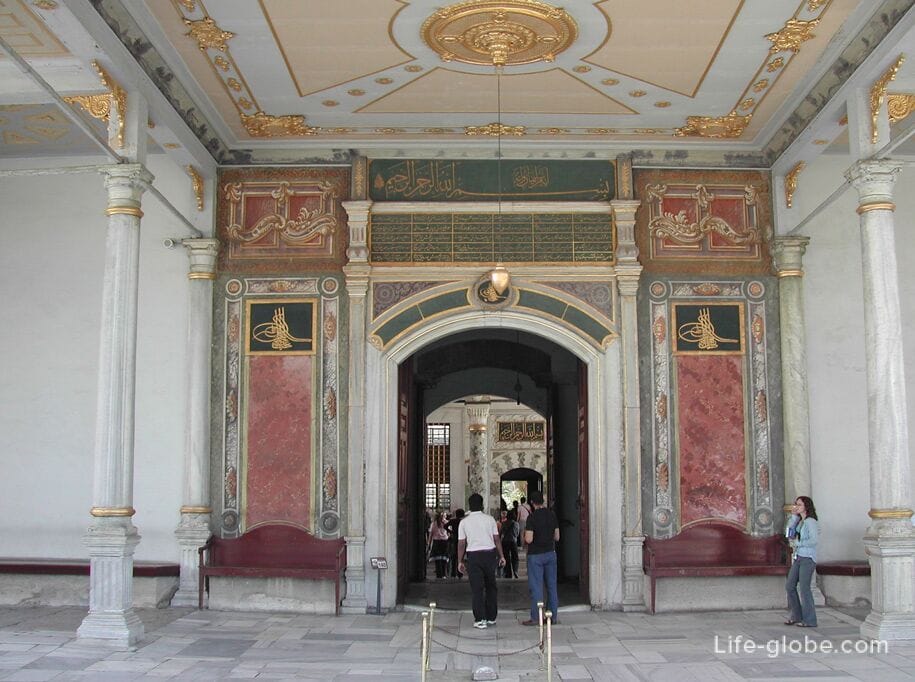
The third Courtyard (III. Avlu) is also called the Inner Courtyard (EndernN Avlusu) and is the heart of the Topkapi Palace.
This is the Sultan's chambers.
In the courtyard: the library of Sultan Ahmed III (III. Kütüphanesi Ahmed), Enderun (inner chambers of the Sultan), school Enderun, the Imperial Treasury (pavilion of the Conqueror), which is considered one of the oldest buildings in Topkapi Palace, the house of treasure, once responsible for the safety of all the jewels the Sultan, the Secret pavilion, speakers personal mansion rulers, the dormitory of the Royal pages (Hasoda Koğuşu), which houses the Imperial portraits Collection (Padişah Portreleri Sergi Salonu).
The largest palace mosque Agalar (Ağalar Camii) is also located here, where the sultan came to pray with his pages and squires.
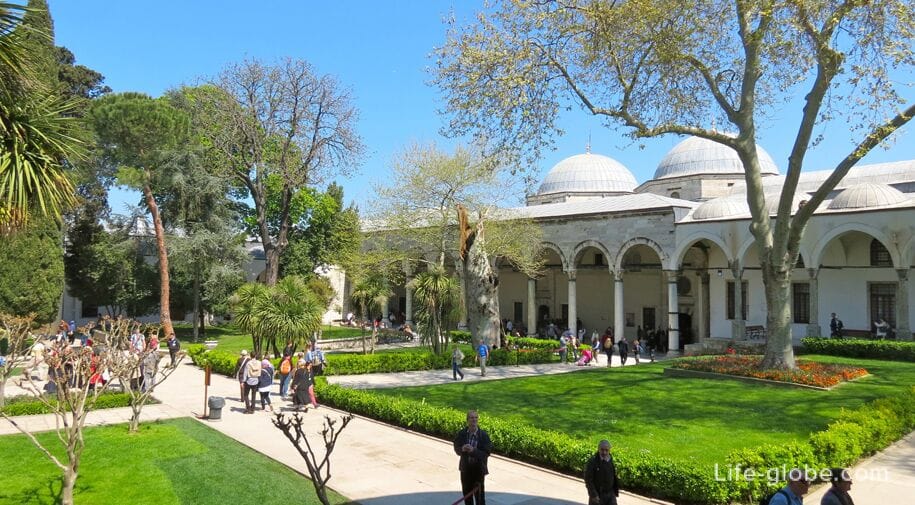

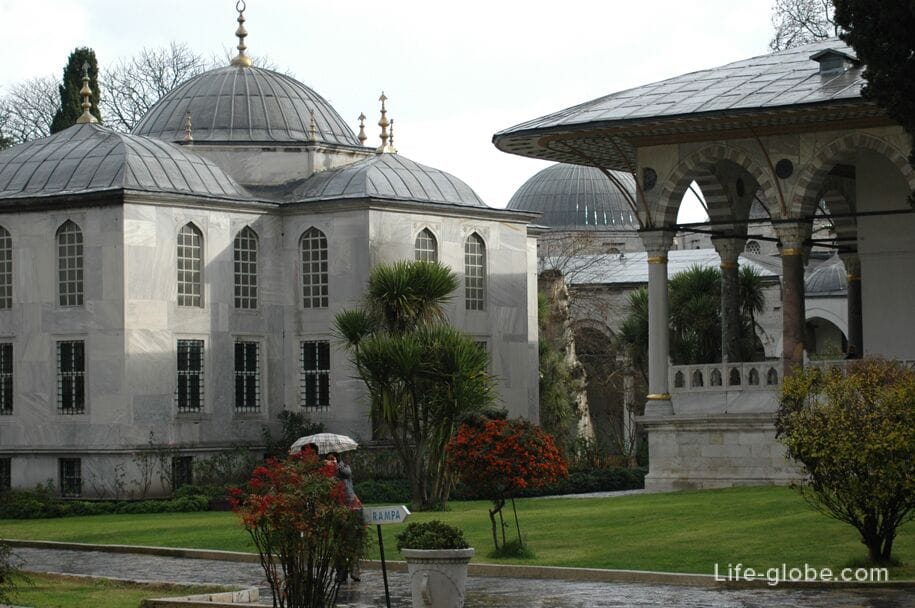
The fourth courtyard (IV. Avlu), also known as the Imperial Sofa (Sofa-Hümâyn), was the intimate private sanctuary of the Sultan and his family and consisted of a hanging garden and a number of pavilions.
There are pavilions and mansions of Revan, Sofa and Medjida, Bashlala Tower, Sofa Mosque, circumcision pavilion, dressing room and other rooms.
The Empire-style mansion of Sultan Abdul-Majid (Mecidiye Köşkü) is attractive because its terrace is also a popular observation deck of the city; there is also a restaurant with a panoramic terrace. There are views of the Bosphorus, the Asian side of Istanbul and the Sea of Marmara. The mansion was built by Sarkis Balyan during the reign of Sultan Abdulmecid. This mansion is the last mansion of the Sultan built in the Topkapi Palace.
Nearby, on the opposite side from the terrace of the mansion, there is a Marble terrace with views of the Golden Horn.
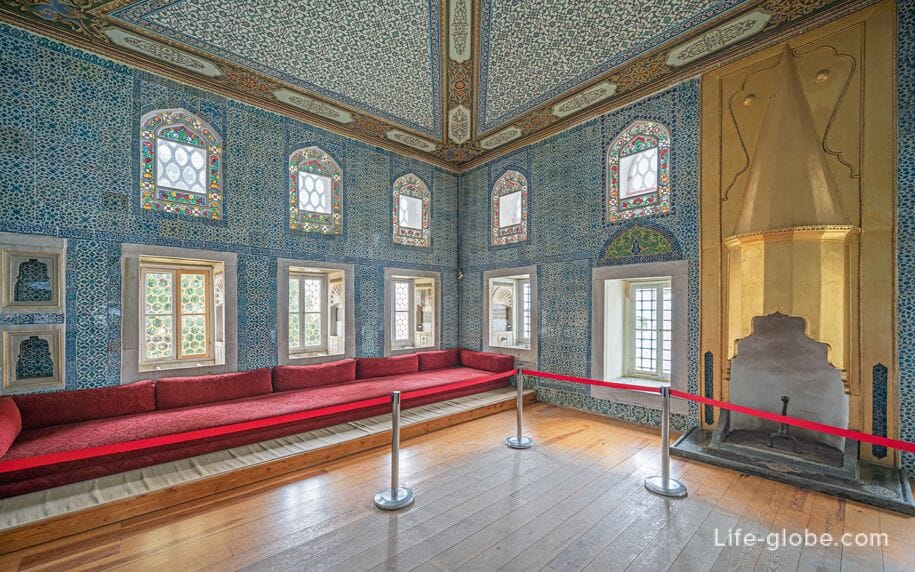
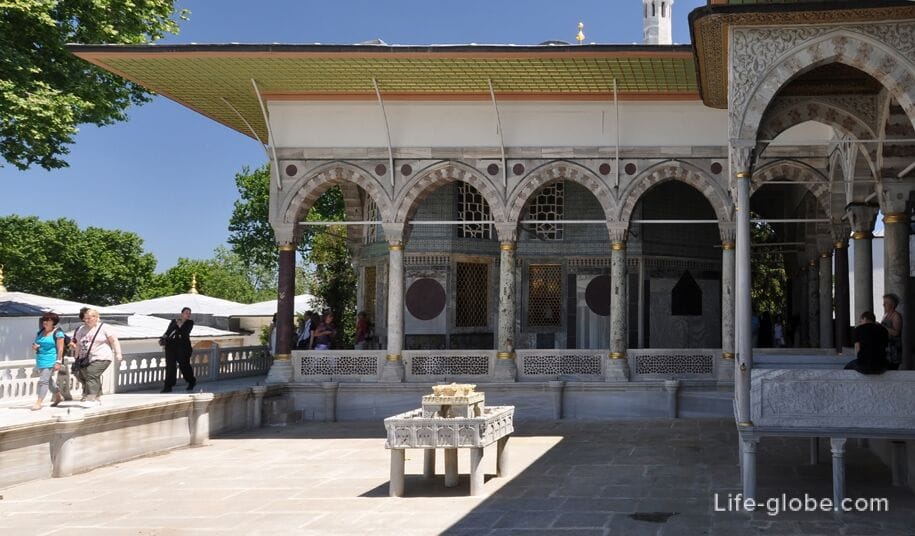

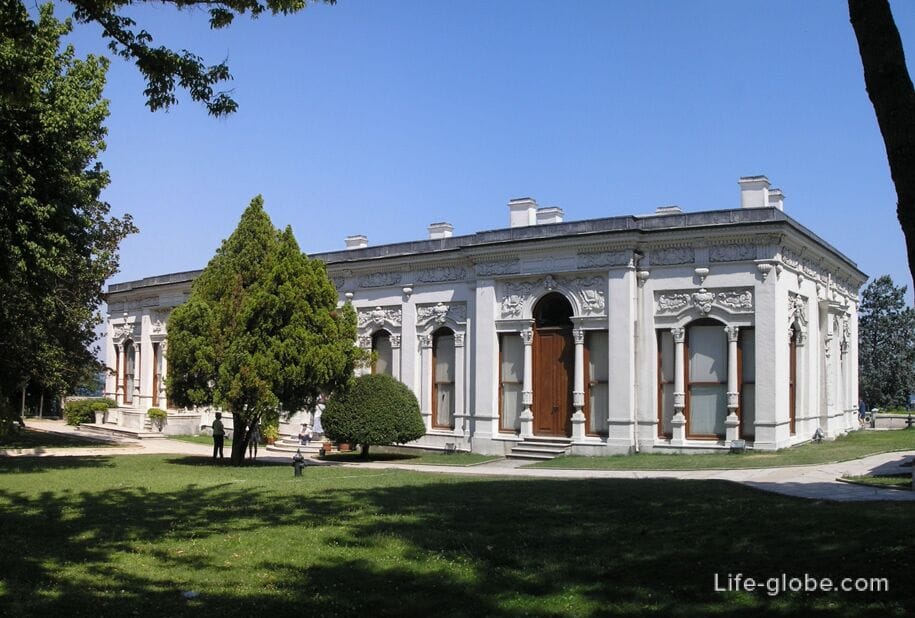
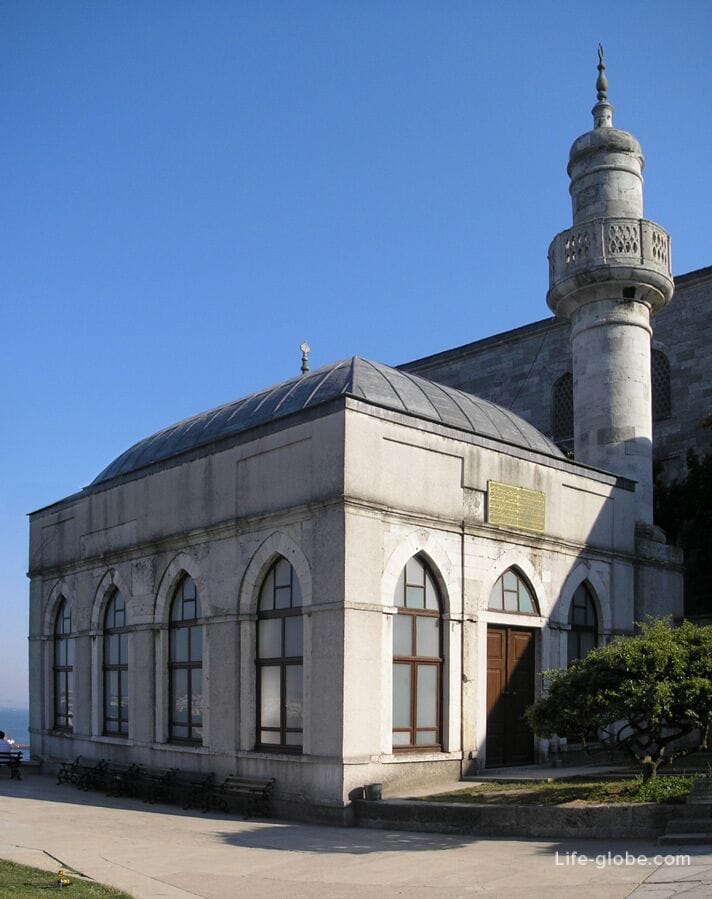
Near the walls of the Topkapi Palace there is a large Gulhane Park, which was the former outer park of the Topkapi Palace.
Today it is a public park with places for walking and recreation, cafes, fountains, monuments, historical sites and museums.
Entrance to the park is free. Learn more about Gulhane Park...

Topkapi Palace Address: Cankurtaran Mh., 34122 Fatih / Istanbul.
Coordinates of Topkapi Palace: 41°00'46.0"N 28°58'59.0"E (41.012778, 28.983056).
The entrance to the palace is through the Sultan's Gate (the first courtyard of the palace complex).
Entrance to the palace is paid - a visit to the palace, the palace harem and the Church of St. Irene is paid separately.
You can purchase complex tickets to visit: Topkapi Palace + St. Irina's Church, Topkapi Palace + Harem + St. Irina's Church.
You can purchase a museum card of Istanbul (Museum Pass Istanbul) or a museum and tourist card Istanbul E-pass, which include a visit to the Topkapi Palace with a harem and the Church of St. Irene, as well as some other important museums and places of the city. Learn more about museum and tourist maps of Istanbul...
Tickets to the Topkapi Palace can be purchased at the ticket office of the first courtyard of the palace or at the ticket offices near the palace complex, which is near the Hagia Sophia Mosque.
We recommend checking the ticket price, opening hours and conditions of visiting the Topkapi Palace immediately before visiting the official website: topkapi-sarayi.
You can also see and (or) visit the Topkapi Palace with one of the excursions in Istanbul
You can get to the Topkapi Palace on foot from the ferry piers near Galata Bridge; from the railway station of the city train "Marmaray Sirkeci Istasyonu"; from the tram stop T1 "Sultanahmet"; from the metro station Vezneciler (green line M2). You can also get there by taxi, rented car, or by taking a tour on the Istanbul Hop-On Hop-Off tour bus (there are tickets for 1, 2 or 3 days).
Tickets for the Istanbul sightseeing bus can be purchased here →
All accommodation facilities in Istanbul, including in the historical center, on the European and Asian sides of the city, can be viewed and booked here